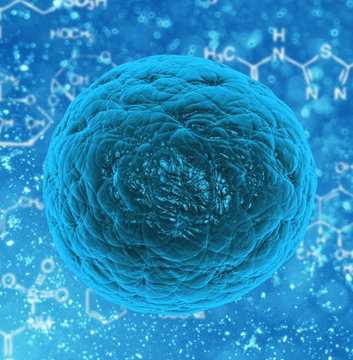
A unique collaboration of astronomers and cancer researchers at Cambridge has been awarded more than £5m to establish the Spatial Profiling and Annotation Centre of Excellence (SPACE) to open up access to their groundbreaking cancer mapping technology and establish collaborations with other scientists to enable them to investigate tumours in 3D.
The technology from Cancer Grand Challenges team IMAXT uses advanced spatial biology techniques to analyse tumours, some of which are based on technology originally developed to map the Milky Way and discover new planets. Now, other scientists will be able to access these technologies to create detailed tumour maps that could one day transform how we diagnose and treat cancer.
Led by Professor Greg Hannon and Dr Dario Bressan at the Cancer Research UK Cambridge Institute and Dr Nicholas Walton at the University of Cambridge’s Institute of Astronomy, SPACE will give other researchers the opportunity to study cancer in a way that wasn’t previously possible.
Dr Dario Bressan, Head of the SPACE Laboratory at the Cancer Research UK Cambridge Institute, said: “Tumours aren’t just a uniform mass of cells; they consist of a diverse ecosystem of cancer cells, immune cells, and other essential components that support their survival. Hidden within these intricate networks lies valuable information which could guide us in making more personalised treatment decisions for each patient.
“With the SPACE platform, researchers can zoom into specific cell populations, highlight the complex connections between them, and even run virtual experiments to predict how the tumour might respond to different treatments. By unlocking these insights, we can transform the future of cancer care and uncover new opportunities for targeted therapies.”
The IMAXT team was first awarded £20 million in 2017 by Cancer Research UK through Cancer Grand Challenges, a global research initiative co-founded by Cancer Research UK and the National Cancer Institute in the US.
Since then, the team has united experts from fields rarely brought together including medicine, Virtual Reality (VR), programming, molecular biology, chemistry, mathematics, and even astronomy, to create a completely immersive tool for studying tumours.
As well as enabling scientists to analyse 3D tumour maps, IMAXT created pioneering VR technology which allows the user to ‘step inside’ a tumour using a VR headset.
With the headset, scientists get to view vast amounts of detailed data about individual tumour cells in a 3D space. Instead of looking at this data on a computer screen, they can see all the information in real-time, as if they were inside the tumour itself.
Professor Greg Hannon, Director of the Cancer Research UK Cambridge Institute, said: “Cancer Grand Challenges offers a unique opportunity for international teams to address some of cancer’s biggest challenges. When we took on our particular challenge, much of what we proposed was science fiction.
“Over the past 7 years, our team has turned those early hopes and ideas into approaches that can now be made broadly available. In nature, biology unfolds in three dimensions, and we now finally have the tools to observe it that way—giving us a much deeper, more accurate view of cancer. We’re thrilled to share these breakthroughs with the broader cancer research community.”
